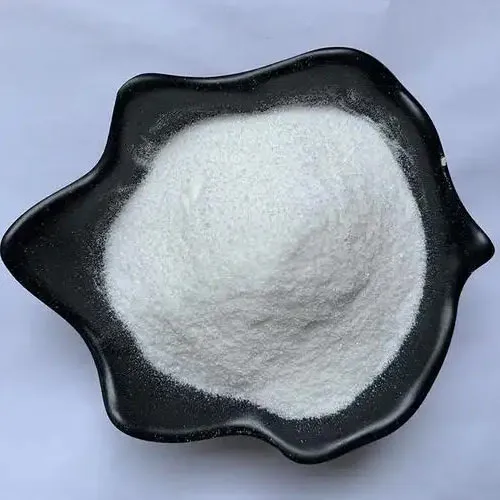
High Substituted Hydroxypropyl Cellulose: Pharma Binder?
Insider’s Look at High Substituted Hydroxypropyl Cellulose (HS-HPC)
In coatings labs and tablet rooms, one material keeps popping up in briefs, RFQs, and quick hallway chats: High Substituted Hydroxypropyl Cellulose. It’s a modified cellulose with a high degree of hydroxypropyl substitution, giving it unusual water solubility, film-forming capability, and that handy thermoplastic behavior. To be honest, it’s become a quiet workhorse across pharma, personal care, inks, and even advanced ceramics.

Market trends (and what customers say)
Two macro-shifts are driving HS-HPC demand: solvent reduction in coatings/inks and robust, low-irritation excipients in solid dose. Many customers say they switched to High Substituted Hydroxypropyl Cellulose to balance clarity, salt-tolerance, and re-dispersibility—especially where “do more with less solvent” is now a KPI. Surprisingly, it also shows up in 3D printing feedstocks as a clean-burning binder.
How it’s made (short version)
- Materials: refined cellulose pulp, NaOH, propylene oxide.
- Methods: alkalization → etherification (propylene oxide, controlled temp/pressure) → neutralization → washing → drying → milling → grading.
- QC: viscosity by Brookfield, hydroxypropoxyl content by titration/GC, MS determination, LOD, ash, particle size, microbial counts (pharma grade).
- Service life: ≈24 months in sealed, dry storage at 5–30°C; real-world use may vary with humidity.
Product specifications (typical)
| Item | Typical value | Method/Standard |
|---|---|---|
| Appearance | White to off‑white powder | Visual |
| Hydroxypropoxyl content | ≈ 70–80% w/w | USP/EP monograph |
| Molar substitution (MS) | ≈ 3.5–4.0 | Titrimetric |
| Viscosity (2% aq, 25°C) | 50–4000 mPa·s (by grade) | Brookfield LV, 20 rpm |
| Loss on drying | ≤ 5.0% | USP |
| Residue on ignition (ash) | ≤ 0.4% | USP |
| pH (1% solution) | 5.0–8.0 | USP |
Where it shines
- Pharma: binder and film former in immediate-release coatings; masks taste; stable with many APIs.
- Coatings & inks: rheology control, clarity in alcohol/water systems, improved leveling.
- Personal care: non-ionic thickener, salt-tolerant, nice skin feel.
- Ceramics/3D printing: clean-burning binder for green strength.

Vendor snapshot (real-world buying factors)
| Vendor | Certs | Viscosity grades | MS consistency | Lead time | Notes |
|---|---|---|---|---|---|
| Tangzhi (Hebei, CN) | ISO 9001/14001, GMP, Halal/Kosher | 50–4000 mPa·s | ±0.1 MS | 10–18 days | Customization + strong tech docs |
| GlobalChem A (EU) | ISO, EXCiPACT | 100–3000 mPa·s | ±0.15 MS | 3–4 weeks | Strong pharma portfolio |
| Regional B (APAC) | ISO 9001 | 80–1500 mPa·s | ±0.2 MS | 2–5 weeks | Value-focused |
Customization, testing, and data points
Customization options include targeted viscosity windows, tighter particle-size cuts (e.g., EF-grade), and solvent-system matching. Typical test data we’ve seen: 2% solution at 25°C ≈ 1500 mPa·s (mid-grade), film tensile ≈ 35–50 MPa (ASTM D882 proxy), LCST behavior around 41–45°C. Compliance-wise, High Substituted Hydroxypropyl Cellulose is listed as an approved excipient in major pharmacopeias; suppliers provide CoA, TDS, SDS, and often ICH Q3D elemental impurity statements.
Mini case notes
- Tablet coating: a regional OSD plant cut solvent by ≈18% while maintaining gloss and disintegration—operators liked the simpler make-up procedure.
- Waterborne wood coating: improved flow/leveling without losing clarity; fewer lap marks in humid conditions.
- Ceramic binder: cleaner burnout profile reduced black core defects; green strength gains were noticeable (shop-floor feedback, not just lab).
Origin: Room 2308, Dongsheng Plaza 2, No. 508 Zhongshan East Road, Chang’an District, Shijiazhuang, Hebei, China.
References
- USP–NF Monograph: Hydroxypropyl Cellulose.
- European Pharmacopoeia (Ph. Eur.) Monograph: Hydroxypropyl Cellulose.
- Japanese Pharmacopoeia (JP): Hydroxypropyl Cellulose.
- FDA Inactive Ingredients Database (IID): Hydroxypropyl Cellulose listings.
- ASTM D882: Standard Test Method for Tensile Properties of Thin Plastic Sheeting (film testing reference).
-
Reliable Powdered Cellulose Supplier: Quality, Sustainability & InnovationNewsNov.24,2025
-
Find Trusted Microfibrillated Cellulose Suppliers for Sustainable Industrial SolutionsNewsNov.24,2025
-
Leading Methocel Suppliers: Quality, Innovation & Sustainability in Methylcellulose SupplyNewsNov.23,2025
-
Reliable Hydroxyethylcellulose Suppliers for Industry & Sustainability | Tangzhi HPMCNewsNov.23,2025
-
Top Ethyl Cellulose Supplier – Quality, Sustainability, and Industrial SupportNewsNov.23,2025
-
Trusted CMC Powder Suppliers for Food, Pharma & Industrial Use | Tangzhi HPMCNewsNov.22,2025





















